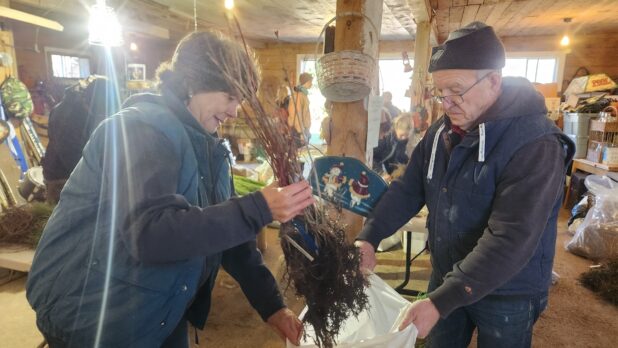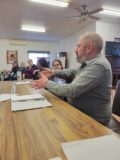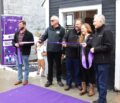General News
Tree and shrub program cultivates community
April 30, 2024

By Kaitlin Sylvester
For nearly three decades, the Bancroft Stewardship Council has been at the forefront of environmental stewardship in the Bancroft region. One of their flagship initiatives, the Tree and Shrub Pick-Up Program has become a cornerstone of local conservation efforts. Order pick up fell early this year, on April 27, due to the warmer than usual weather.
Established 29 years ago, the program has evolved into a vital resource for residents looking to make a positive impact on their surroundings. Ian Hendry, chair of the program, talks about the program’s significance, saying, “we treat it as a break-even program; it’s not a money-maker for the council that’s for sure!” The primary goal is not profit but rather the restoration and replenishment of natural resources ravaged by invasive species.
Native trees and shrubs are the backbone of this initiative. With careful consideration of the local ecosystem, only species indigenous to the area are offered for sale. This ensures that the flora reintroduced into the environment seamlessly integrates and thrives, contributing to the overall biodiversity. Hendry says, “all we sell are native trees and shrubs, at a lower cost than you’ll find anywhere else” emphasizing the program’s commitment to ecological integrity.
The BASC’s impact extends beyond individual properties or one off programs. With proceeds allocated to larger-scale planting projects like the Shoreline Rehabilitation Program or the Coe Hill Public School Arboretum, every purchase feeds back into the community’s environmental well-being. Additionally, donations from events like the Tall Pines Rally further bolster these efforts, amplifying the council’s dedication to area conservation.
When asked about the program’s significance in such a rural area, Hendry points to the significant threat human beings pose on the ecosystem. Homeowners and businesses who clear out native trees and shrubs in order to facilitate a ‘clean’ lawn or garden are doing more damage than they realise to the local infrastructure.
Invasive species also pose a significant threat to the region’s ecological balance. As Hendry points out, “there are 400 invasive species in Ontario alone. They live in the lake, live in the trees, and they’re being brought in from so many different avenues it’s hard to keep up.” The tree and shrub program aims to replenish vital species, like the beech and elm trees, lost to invasive onslaughts. By offering alternatives and restoring native habitats, the program aims to mitigate the ecological damage inflicted by invasive flora and fauna. Hendry says, “our goal with these programs is to replace natural resources that have been wiped out by invasive species.The beech and elm trees that have been wiped out were an important food source. Hopefully this program can replace some of them to offer an alternative food supply.”
The program’s impact goes beyond reforestation, and instead takes aim at changing the involvement of the region’s community members and businesses. At the BASC’s core lies the goal of community engagement and education. Through initiatives like the three “Es” (Engage, Education, Empower) BASC is working to foster a deeper connection between residents and their natural surroundings. By collaborating with like-minded groups and incorporating indigenous knowledge, the team at BASC seeks to ensure a holistic approach to environmental stewardship.
The tree and shrub program’s longevity and success is a testament to the resilience of local conservation efforts. In the face of dwindling governmental support, organizations like BASC have emerged across Ontario as not-for-profit and volunteer run programs. Hendry reflects,” The Bancroft Area Stewardship Council is really, incredibly strong. It’s probably the best in Ontario.”
BASC’s strategic vision revolves around partnership development, environmental education, and outreach. Through strategic objectives throughout the year, they aim to galvanize support, raise awareness, and expand the program reach throughout the region. With a commitment to reforestation, wildlife habitat enhancement, and shoreline naturalization, this program not only provides native trees and shrubs to landowners but also embodies a community-driven approach to environmental preservation.


















